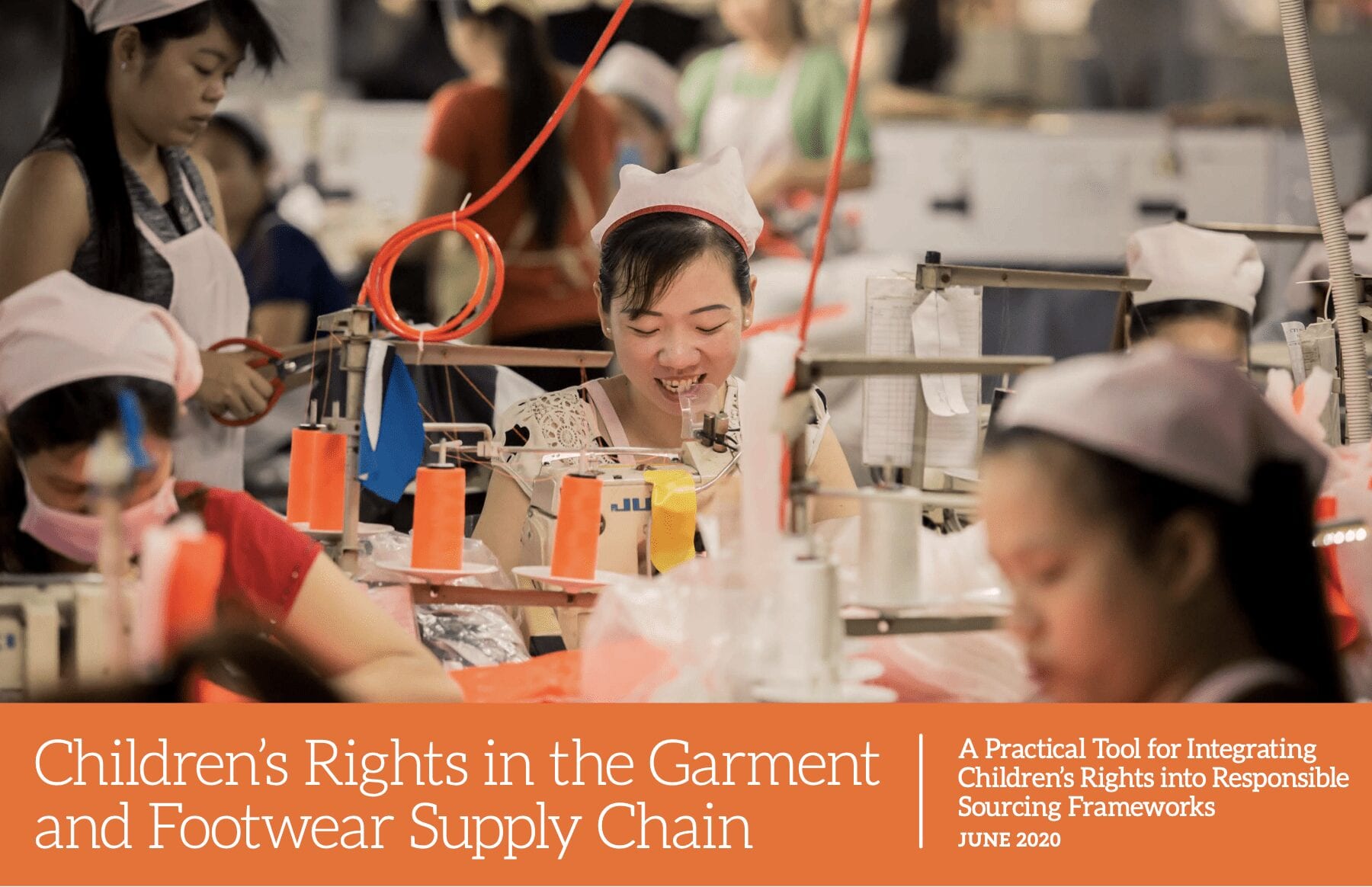
Children’s Rights in the Garment and Footwear Supply Chain: A Practical Tool for Integrating Children’s Rights into Responsible Sourcing Frameworks
Recognizing the need for the garment and footwear sector to more effectively address adverse impact on children, and thereby reduce sustainability risks, in 2017 UNICEF and Norges Bank Investment Management established the Network on Children’s Rights in the Garment and Footwear Sector. The network was set up to facilitate a dialogue between garment and footwear brands, manufacturers and civil society experts to raise awareness, share innovative practices and promote action to improve the human rights impact on children in the sector.
One of the key discussions in the network focused on the need to develop guidance for companies to more effectively integrate children’s rights into responsible sourcing approaches. A need for relevant child rights metrics was also expressed, which allow companies and investors to measure and track progress in meaningful ways. Until now, child rights risks beyond child labour are rarely called out in existing audit, monitoring and reporting mechanisms. This document attempts to fill this gap by
- gathering available evidence on how children are impacted in the garment and footwear supply chain;
- identifying limitations in current approaches to effective management of these impacts; and
- developing guidance and metrics for companies to take steps to integrate child rights into their approaches to supply chain management.
The document also addresses the role of investors and includes recommendations on how they can use their leverage to encourage better integration of child rights in companies they invest in.
The findings and recommendations in this report are made with both garment buyers (‘brands’, ‘retailers’) and producers (‘suppliers’, ‘manufacturers’) in mind. Importantly, this guide recognizes the critical role of governments as a duty-bearer to protect children’s rights and to promote their progressive realization, including in the context of business activities. Against this backdrop, this guide seeks to promote an understanding of ‘shared responsibility’, which includes collective action by all relevant stakeholders, to address child rights at the systemic level.
Read more here.
